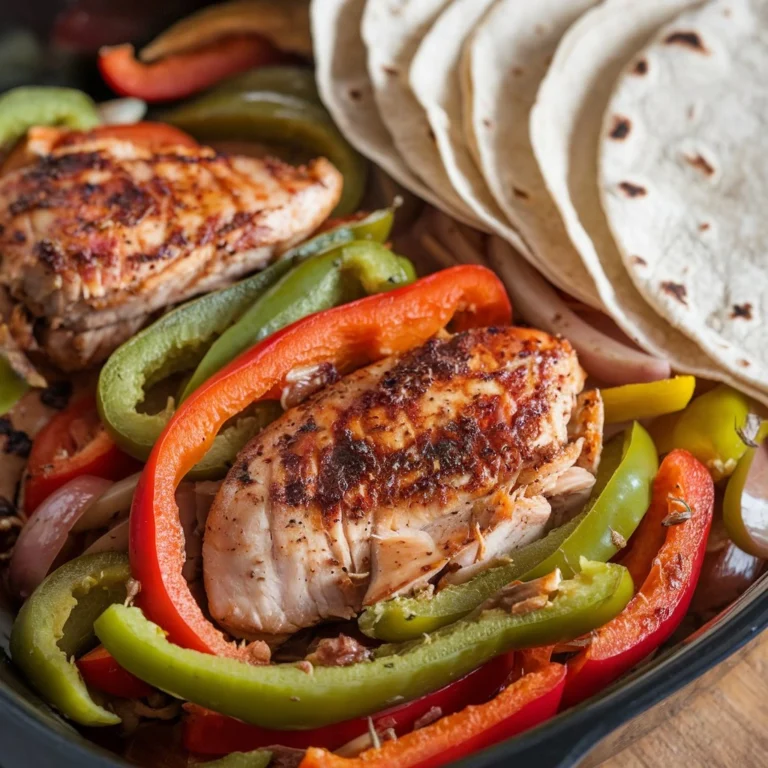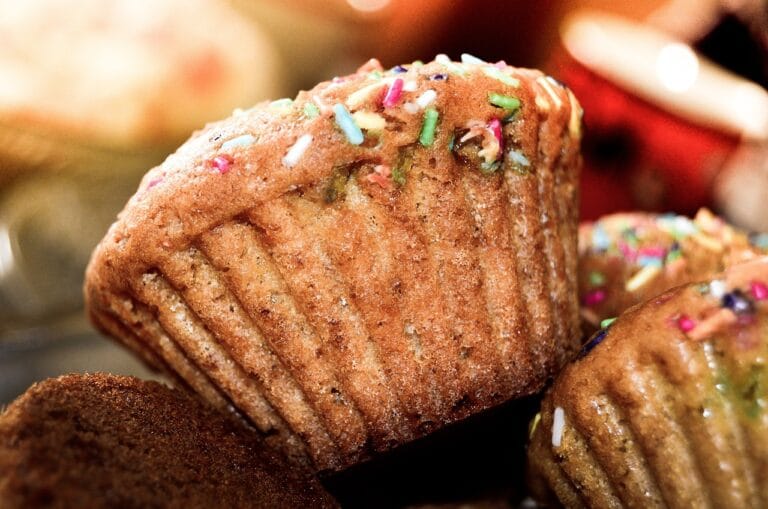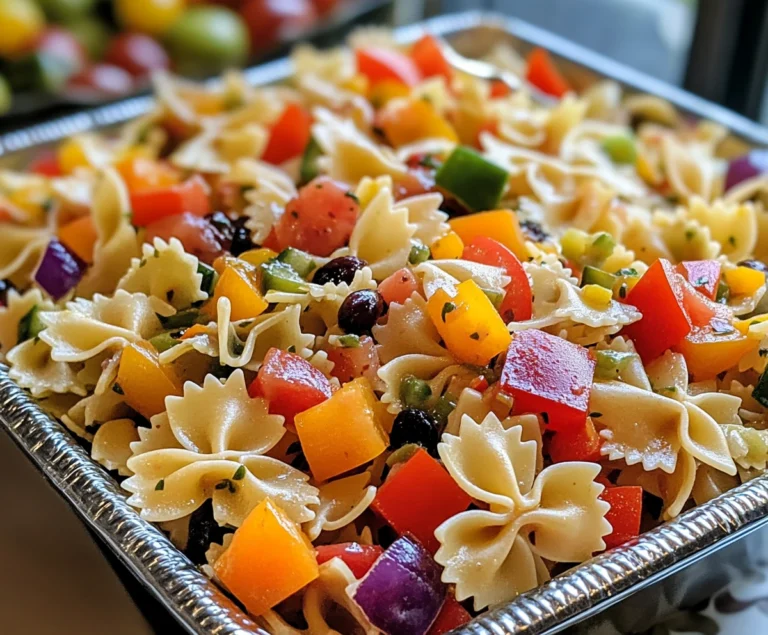What Not to Do When Making Biscuits
Biscuits, with their buttery, flaky texture and rich flavor, are a beloved part of many meals. Whether they’re served at breakfast, as a side to a hearty dinner, or simply enjoyed with a bit of jam or honey, biscuits are a versatile and comforting dish. However, as simple as biscuits may seem, they can be surprisingly difficult to perfect. A few common mistakes during preparation or baking can lead to biscuits that are dense, flat, or crumbly — a far cry from the fluffy, flaky texture you want.
The good news? Most biscuit-making mistakes are easily avoidable once you understand what’s going wrong. This article will delve deep into what not to do when making biscuits, offering you solutions and tips to ensure your biscuits turn out perfectly every time.
Part 1: Common Mistakes and How to Avoid Them
(Word Count: ~2500)
1. Using Soft or Room Temperature Butter
When it comes to biscuits, butter is one of the most important ingredients. It’s responsible for the rich, buttery flavor and the flaky layers that we all love. However, using butter that is too soft or at room temperature is one of the most common mistakes people make when baking biscuits.
Why Cold Butter Matters
To understand why cold butter is critical for biscuit success, it’s helpful to know a little bit about the science of baking. As the cold butter melts in the oven, it releases steam. This steam creates pockets in the dough, leading to the flaky texture you’re aiming for. If the butter is too warm, it won’t create these steam pockets, and your biscuits will end up flat and dense instead of tall and flaky.
In essence, the colder the butter, the better your biscuits will rise. Using soft butter simply doesn’t create those wonderful layers because it melts too quickly, absorbing into the dough and preventing the rise.
Solutions
- Keep the Butter Cold: Always use cold butter when making biscuits. You can cut the butter into small cubes and keep them in the refrigerator until just before you’re ready to mix them into the dough. Some bakers even freeze the butter for 10-15 minutes before starting the recipe.
- Grating the Butter: For an even distribution of butter, try freezing it and then grating it directly into the flour. This method ensures the butter stays cold and evenly distributed throughout the dough.
For more information about how butter influences baked goods, check out this detailed guide on the role of butter in baking.
Tools to Help Maintain Cold Butter:
- Pastry Cutter: Use a pastry cutter to blend the cold butter into the dry ingredients quickly. This helps keep the butter cold while incorporating it evenly.
- Food Processor: Another option is to pulse the butter and flour in a food processor until the butter is pea-sized. However, be careful not to over-process, as this can warm the butter.
Pro Tip: If you find that your butter is warming up too quickly while preparing the dough, pop it back in the fridge or freezer for a few minutes before continuing. The colder the butter, the flakier your biscuits will be!
2. Overmixing or Overworking the Dough
Another common mistake that often leads to dense, tough biscuits is overmixing or overworking the dough. While it’s tempting to want a smooth, well-mixed dough, biscuits actually need a light touch. The more you handle the dough, the more gluten forms, which leads to a chewy texture — great for bread, but not for biscuits.
The Role of Gluten in Biscuit Dough
When you combine flour with water, gluten proteins begin to develop. These proteins give structure to baked goods, but too much gluten will make your biscuits tough and chewy. You want a balance: enough structure to hold the biscuits together, but not so much that they lose their delicate, flaky texture.
Overmixing or kneading the dough activates the gluten too much, leading to dense, heavy biscuits. Instead of light and tender, you’ll end up with something closer to a hockey puck.
Solutions
- Mix Gently: After adding the liquid ingredients, stir just until the dry ingredients are moistened. You don’t need a perfectly smooth dough. In fact, it’s okay if there are a few dry spots — these will hydrate as the dough rests.
- Knead Sparingly: If the recipe calls for kneading, do it very lightly. Knead the dough just enough to bring it together, usually 5-7 turns. The dough should be shaggy, not smooth.
- Use a Gentle Folding Method: Instead of kneading, some bakers use a folding method to create layers. After the dough is mixed, fold it over on itself 2-3 times to create layers without overworking the gluten.
For more tips on avoiding overworking dough, check out this article on common baking mistakes.
3. Measuring Ingredients Incorrectly
One of the biggest causes of biscuit failure is incorrectly measuring ingredients, especially flour. Baking is a science, and even a small variation in the amount of flour can lead to vastly different results. Too much flour makes the biscuits dry and crumbly, while too little flour can make the dough too sticky to handle.
Why Accurate Measurements Matter
Unlike cooking, where you can improvise and adjust ingredients as you go, baking requires precision. When you use too much flour, you throw off the ratio of wet to dry ingredients, which results in a dry, dense biscuit. On the flip side, using too little flour can lead to a sticky dough that’s difficult to shape and handle.
The problem often lies in how the flour is measured. Many people scoop flour directly from the bag with their measuring cup, which can pack the flour down and result in using too much.
Solutions
- Spoon and Level Method: Instead of scooping flour directly from the bag, spoon the flour into the measuring cup and level it off with a knife. This ensures you don’t pack too much flour into the cup.
- Use a Kitchen Scale: For even greater accuracy, use a kitchen scale to measure ingredients by weight. Most biscuit recipes will call for about 120 grams of flour per cup.
- Measuring Liquids: Be sure to measure liquids like milk or buttermilk using a liquid measuring cup, not the dry ingredient measuring cups. This ensures you get the correct amount of liquid for the dough.
Pro Tip: If you’re working with high-moisture environments (like a very humid kitchen), your flour can absorb moisture from the air. In these cases, it might be helpful to slightly reduce the liquid or increase the flour.
4. Using Expired Baking Powder
Your biscuits rely on baking powder as their leavening agent. Baking powder is what makes the biscuits rise and gives them their light, fluffy texture. However, if your baking powder is old or expired, it will not react properly, resulting in flat, dense biscuits that won’t rise as they should.
How Baking Powder Works
Baking powder is a combination of an acid and a base that reacts with liquid and heat to create carbon dioxide gas. These gas bubbles are what cause the dough to rise and become fluffy. If your baking powder is expired or ineffective, there won’t be enough gas produced, and your biscuits will stay flat and dense.
Solutions
- Check the Expiration Date: Always check the expiration date on your baking powder before using it. If it’s past its prime, buy a fresh container.
- Test the Baking Powder: To test if your baking powder is still active, place a teaspoon of baking powder in a small bowl and add hot water. If it bubbles vigorously, it’s still good to use. If it doesn’t fizz much, it’s time to replace it.
- Storage: Keep your baking powder in an airtight container in a cool, dry place. Moisture can cause it to clump and lose its effectiveness.
Pro Tip: Using fresh leavening agents is essential not just for biscuits, but for all baked goods. If you bake frequently, you might want to buy smaller quantities of baking powder to ensure you’re always using a fresh supply.
5. Not Preheating the Oven Properly
An often overlooked but crucial step in biscuit-making is properly preheating the oven. Biscuits need high heat to rise quickly. Placing biscuits in a cold or under-preheated oven can lead to poor rise and an underwhelming texture.
Why Temperature Matters
Biscuits rely on high, consistent heat to rise. When biscuits go into a properly preheated oven, the cold butter inside the dough melts, releasing steam that helps create flaky layers and lift the dough. If the oven isn’t hot enough, the butter will simply melt into the dough without creating steam, leading to flat, greasy biscuits.
Most biscuit recipes call for oven temperatures between 400-450°F (200-230°C). This high heat is key to getting a good rise and ensuring the biscuits are fully cooked without drying out.
Solutions
- Preheat the Oven: Always preheat your oven to the correct temperature before placing your biscuits inside. Let the oven preheat for at least 10-15 minutes to ensure it reaches the desired temperature.
- Use an Oven Thermometer: Many ovens run either hotter or cooler than the temperature setting indicates. To make sure your oven is accurate, use an oven thermometer to check the temperature.
- Avoid Opening the Oven Door: While it’s tempting to check on your biscuits as they bake, try to avoid opening the oven door too frequently. Each time you open the door, the oven loses heat, which can affect the baking process.
Pro Tip: Biscuits bake quickly, so keep a close eye on the time. Most recipes will have biscuits done in about 12-15 minutes, depending on size and temperature. Rotate the baking sheet halfway through to ensure even baking.
6. Skipping the Resting Time for Dough
Resting the dough before baking is often a crucial step that many home bakers skip. Letting the dough rest allows the flour to hydrate and the gluten to relax, resulting in tender, fluffy biscuits. Skipping this step can leave you with dense, tough biscuits.
Why Resting the Dough Matters
Resting the dough does two things: it allows the flour to absorb the liquid, which helps create a softer dough, and it gives the gluten a chance to relax. When gluten is relaxed, the dough is easier to roll out and shape, and the final biscuits will have a softer, more tender texture.
Additionally, resting the dough allows any pockets of cold butter to firm up again after handling. This means that when the biscuits bake, the cold butter will melt more slowly, creating the steam pockets that lead to flakiness.
Solutions
- Rest the Dough: After mixing the dough, cover it with plastic wrap or a kitchen towel and let it rest for 15-30 minutes before cutting and baking. This step will improve both the texture and the rise of your biscuits.
- Chill the Dough if Needed: If your kitchen is particularly warm, or if the butter started to soften too much while working with the dough, you can rest the dough in the refrigerator. This keeps the butter cold and ensures your biscuits bake up flaky and delicious.
7. Twisting the Biscuit Cutter
How you cut out your biscuits can have a surprising impact on their rise and texture. One of the most common mistakes is twisting the biscuit cutter when cutting the dough. Twisting seals the edges of the dough, preventing the biscuits from rising properly.
Why Twisting is a Problem
When you twist the cutter, you compress the edges of the dough, which prevents the biscuits from rising straight up. Instead, they’ll bake up flatter and more dense, with uneven edges.
Solutions
- Press Straight Down: When cutting out your biscuits, press the cutter straight down and lift it straight up without twisting. This keeps the edges of the dough sharp and allows the biscuits to rise evenly.
- Use a Sharp Cutter: A sharp biscuit cutter or knife will give you clean edges, which helps ensure a better rise. If you’re using a glass to cut the dough, make sure it has a sharp edge to avoid compressing the dough too much.
8. Placing Biscuits Too Far Apart
The spacing of your biscuits on the baking sheet can also affect how they rise. If the biscuits are spaced too far apart, they’ll tend to spread outward rather than rising upward, leading to flatter biscuits.
Why Spacing Matters
Biscuits benefit from a bit of crowding on the baking sheet. When the biscuits are placed close together, they rise taller because they push against each other as they bake. If they’re too far apart, they don’t have that support and will spread out instead of rising.
Solutions
- Place Biscuits Close Together: Space your biscuits about an inch apart on the baking sheet. This gives them enough room to expand but keeps them close enough to rise upward.
- Use a Heavy Baking Sheet: A heavy, light-colored baking sheet works best for biscuits. Darker baking sheets tend to absorb more heat, which can lead to burnt bottoms.
Part 2: Troubleshooting and Advanced Tips
(Word Count: ~1500)
1. Why are My Biscuits Too Dense?
If your biscuits are coming out too dense, the likely culprit is overworking the dough or using expired baking powder. As mentioned earlier, both of these mistakes can prevent your biscuits from rising properly.
- Fixes for Dense Biscuits: Handle the dough as little as possible and always use fresh leavening agents. Be sure to mix the dough just until the ingredients come together and avoid kneading it too much.
2. Why Didn’t My Biscuits Rise?
Several factors can lead to biscuits not rising as they should, including:
- Expired Leavening Agents: Always check your baking powder’s expiration date.
- Oven Temperature: Make sure your oven is fully preheated and at the correct temperature before placing the biscuits inside.
- Cutting Method: Don’t twist the biscuit cutter, as this compresses the dough and prevents proper rise.
3. Can I Make Biscuits Without Buttermilk?
Buttermilk is a common ingredient in biscuits because its acidity helps activate the baking powder and creates a tender texture. However, if you don’t have buttermilk on hand, you can make a substitute by mixing regular milk with a tablespoon of vinegar or lemon juice. Let the mixture sit for 5-10 minutes before using it in your biscuit dough.
4. What’s the Best Flour for Biscuits?
- All-Purpose Flour: Most biscuit recipes call for all-purpose flour because it strikes the right balance between structure and tenderness.
- Self-Rising Flour: Some recipes use self-rising flour, which already contains leavening agents. If you use self-rising flour, be sure to adjust the recipe accordingly to avoid adding too much baking powder.
Pro Tip: If you prefer an ultra-tender biscuit, try using cake flour in combination with all-purpose flour. Cake flour has a lower protein content, which helps create a lighter texture.
5. How Can I Add Flavor to My Biscuits?
While classic biscuits are delicious on their own, you can also experiment with different flavors by adding mix-ins such as:
- Herbs: Fresh herbs like rosemary, thyme, or chives can add a savory note to your biscuits.
- Cheese: Shredded cheddar, Parmesan, or Gruyère cheese adds richness and flavor.
- Spices: A pinch of smoked paprika, garlic powder, or cayenne pepper can add a little extra kick.
Conclusion
Baking biscuits is both an art and a science, but with the right techniques and an understanding of what not to do when making biscuits, you’ll be well on your way to mastering the perfect biscuit. Whether you’re aiming for tall, flaky biscuits or tender, buttery layers, avoiding these common mistakes will make all the difference in your final result.
By using cold butter, handling the dough gently, and ensuring your ingredients are fresh and correctly measured, you’ll achieve light, delicious biscuits every time. For more helpful tips and related baking guides, be sure to explore this perfect cupcake recipe for additional baking inspiration.







